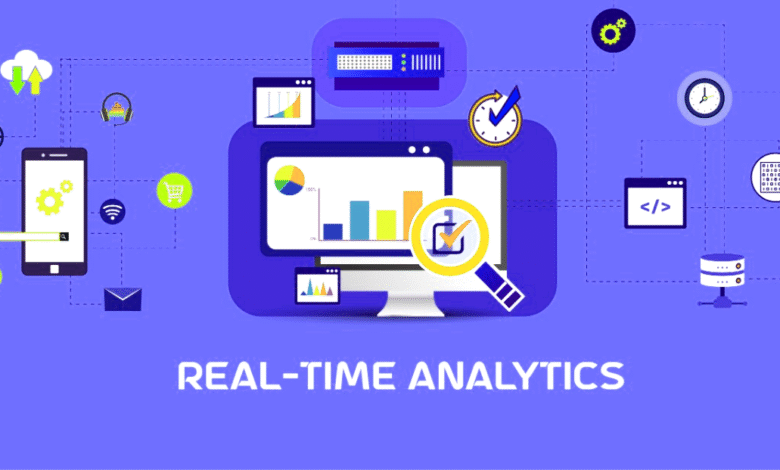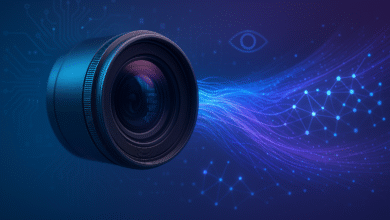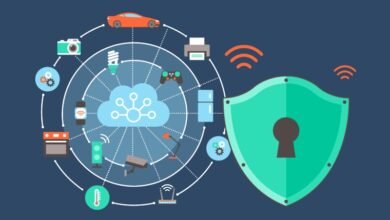
In today’s hyper-connected digital landscape, the Internet of Things (IoT) has emerged as a driving force behind the next technological revolution. The integration of real-time data analytics in IoT is transforming how businesses gather insights, make decisions, and automate processes. From smart cities and industrial automation to healthcare and agriculture, IoT devices are constantly generating massive volumes of data. The real challenge lies not just in collecting this data, but in analyzing it in real time to deliver actionable insights.
This article explores the essential tools, trends, and strategies for real-time data analytics in IoT, empowering organizations to harness the full potential of their IoT ecosystems.
Understanding Real-Time Data Analytics in IoT
At its core, real-time data analytics involves processing and analyzing data as it is generated, with minimal latency. In an IoT context, this means interpreting data from connected devices—such as sensors, cameras, and meters—the moment it is received.
Traditional analytics typically involve storing data first and analyzing it later. However, with IoT analytics, the value of information often decays rapidly. For example, a temperature spike in an industrial machine must be addressed immediately to prevent damage. Therefore, real-time analytics is not just a luxury—it’s a necessity.
Real-time analytics offers capabilities such as anomaly detection, predictive maintenance, and automation. This allows for better responsiveness, enhanced customer experience, and improved operational efficiency.
Why Real-Time Analytics Matters in IoT
IoT applications often operate in environments where decisions must be made instantly. Here’s why real-time analytics is vital:
-
Improved Decision-Making: Real-time insights help businesses act on data before opportunities are lost or issues escalate.
-
Increased Efficiency: Systems can automatically optimize performance without human intervention.
-
Enhanced Security: Suspicious behaviors can be detected and mitigated immediately.
-
Better User Experience: From personalized marketing to responsive home automation, users expect services that react instantly.
In critical sectors like healthcare, manufacturing, and transportation, delays in data analysis can have severe consequences, further emphasizing the need for low-latency analytics systems.
Key Components of Real-Time IoT Analytics
To implement effective real-time analytics in an IoT environment, several components must work in harmony:
1. Data Collection Layer
This includes sensors, actuators, and other connected devices that continuously generate data. These devices must support reliable and secure communication protocols such as MQTT, CoAP, or HTTP.
2. Data Transmission Layer
Collected data needs to be transmitted securely to the processing units. Edge gateways and wireless protocols like 5G, LoRaWAN, and NB-IoT enable fast and efficient communication.
3. Data Processing Layer
This is where the real-time magic happens. Edge computing and stream processing engines like Apache Kafka, Apache Flink, and Spark Streaming are commonly used to process incoming data instantly.
4. Storage and Integration
While real-time decisions don’t always require persistent storage, integration with data lakes, time-series databases (like InfluxDB), and cloud platforms (like AWS IoT Core or Azure IoT Hub) helps retain data for long-term analysis and compliance.
5. Visualization and Insights
Dashboards and analytics platforms provide a human-readable format of the insights. Tools like Grafana, Power BI, and Kibana help in real-time monitoring and alerting.
Top Tools for Real-Time IoT Data Analytics
Choosing the right tools is critical to building a robust and scalable analytics solution. Here are some of the most effective real-time analytics tools for IoT:
1. Apache Kafka
An open-source distributed event streaming platform ideal for building real-time data pipelines and streaming apps. Kafka is highly scalable and is widely used in IoT ecosystems.
2. Apache Flink
Designed for stateful computations over unbounded and bounded data streams. Flink excels in high-throughput and low-latency processing, making it perfect for IoT use cases.
3. AWS IoT Analytics
Amazon’s cloud-native service that enables sophisticated analytics on IoT data. It allows data preparation, processing, and visualization in real time.
4. Azure Stream Analytics
A real-time analytics service that allows developers to process and analyze data streams from devices and sensors. It integrates seamlessly with Azure IoT Suite.
5. Google Cloud Dataflow
Part of Google Cloud’s data processing suite, it supports real-time and batch processing and integrates easily with other GCP tools.
6. InfluxDB
A high-performance time-series database built specifically for handling IoT metrics and event data. It works well with Telegraf and Grafana for visualization.
7. ThingSpeak
An IoT analytics platform that provides real-time data aggregation, processing, and visualization. Ideal for small to medium-scale IoT applications.
Emerging Trends in Real-Time IoT Analytics
The world of real-time IoT analytics is dynamic, with innovations constantly reshaping how data is utilized. Below are some of the key trends to watch:
1. Edge Analytics
Processing data at the edge—close to the source—reduces latency and bandwidth usage. Edge analytics ensures faster responses, improved privacy, and lower operational costs.
2. AI-Powered Analytics
Artificial Intelligence (AI) and Machine Learning (ML) are being integrated into real-time analytics engines to enable predictive analytics, intelligent decision-making, and automation.
3. 5G Integration
The roll-out of 5G networks is dramatically improving the speed and reliability of data transmission, allowing for real-time analytics on a massive scale, especially in smart cities and autonomous vehicles.
4. Digital Twins
By creating digital replicas of physical assets, businesses can simulate scenarios and predict outcomes using real-time data, enhancing operational foresight and strategic planning.
5. Serverless Architectures
Cloud providers are increasingly offering serverless computing options for stream processing, enabling scalable and cost-efficient analytics without the need to manage infrastructure.
6. Event-Driven Architectures
In an event-driven model, systems respond to events as they happen. This model fits naturally with IoT and enables real-time responsiveness and decoupled system components.
Strategies for Implementing Real-Time IoT Analytics
Organizations looking to implement real-time analytics for IoT should follow a strategic roadmap. Here are proven strategies for successful deployment:
1. Start with Business Goals
Define clear objectives and KPIs. Whether it’s reducing downtime, improving supply chain visibility, or enhancing customer experience, goals must guide the technology stack.
2. Choose the Right Architecture
Decide between centralized, edge, or hybrid architectures based on latency needs, data sensitivity, and infrastructure capabilities.
3. Prioritize Data Quality and Security
Real-time analytics is only as good as the data it analyzes. Implement strong data governance, encryption, and authentication protocols to ensure trust and compliance.
4. Leverage Scalable Infrastructure
Cloud-native and serverless platforms enable easy scalability as the number of connected devices grows.
5. Use Modular and Interoperable Systems
Adopt open standards and APIs to allow seamless integration with existing systems and future-proof the analytics infrastructure.
6. Monitor and Optimize Continuously
Once deployed, continuously monitor performance, latency, and ROI. Use feedback loops to improve models, adjust thresholds, and enhance responsiveness.
Use Cases of Real-Time IoT Analytics
1. Smart Cities
Traffic management, waste collection, and energy usage are optimized in real-time, improving urban efficiency and sustainability.
2. Healthcare
Remote patient monitoring devices generate data that can trigger alerts for doctors and caregivers in real time, saving lives.
3. Industrial IoT (IIoT)
Predictive maintenance in factories minimizes downtime and increases equipment lifespan by analyzing vibration, temperature, and sound patterns.
4. Agriculture
IoT-enabled sensors monitor soil moisture, weather, and crop health. Real-time insights lead to better irrigation and pest control decisions.
5. Retail
Smart shelves and inventory systems track product movement, customer behavior, and sales data to drive real-time promotions and restocking.
Challenges in Real-Time Analytics for IoT
Despite its potential, real-time analytics comes with challenges:
-
Data Deluge: The sheer volume of data from millions of devices can overwhelm systems.
-
Latency Constraints: Ensuring low-latency analytics requires robust infrastructure.
-
Integration Complexity: IoT ecosystems involve heterogeneous devices and protocols, making seamless integration difficult.
-
Security Risks: Real-time systems are often prime targets for cyberattacks due to their critical nature.
-
Skill Gap: Organizations need talent with skills in streaming technologies, AI, and IoT protocols.
Addressing these issues requires a combination of technological innovation, strategic investment, and ongoing training.
Conclusion
Real-time data analytics in IoT is no longer a futuristic concept—it’s a present-day business imperative. As IoT devices become more widespread and data volumes continue to grow, organizations that invest in the right tools, embrace emerging trends, and follow strategic implementation frameworks will gain a competitive edge.
Whether you’re enhancing smart manufacturing processes, optimizing urban infrastructure, or revolutionizing customer engagement, real-time analytics transforms raw IoT data into meaningful actions. The convergence of edge computing, AI, and cloud platforms is unlocking new possibilities, enabling smarter, faster, and more efficient operations across every sector.
Embracing real-time IoT analytics is not just about technology—it’s about transforming data into decisions, and decisions into impact.











